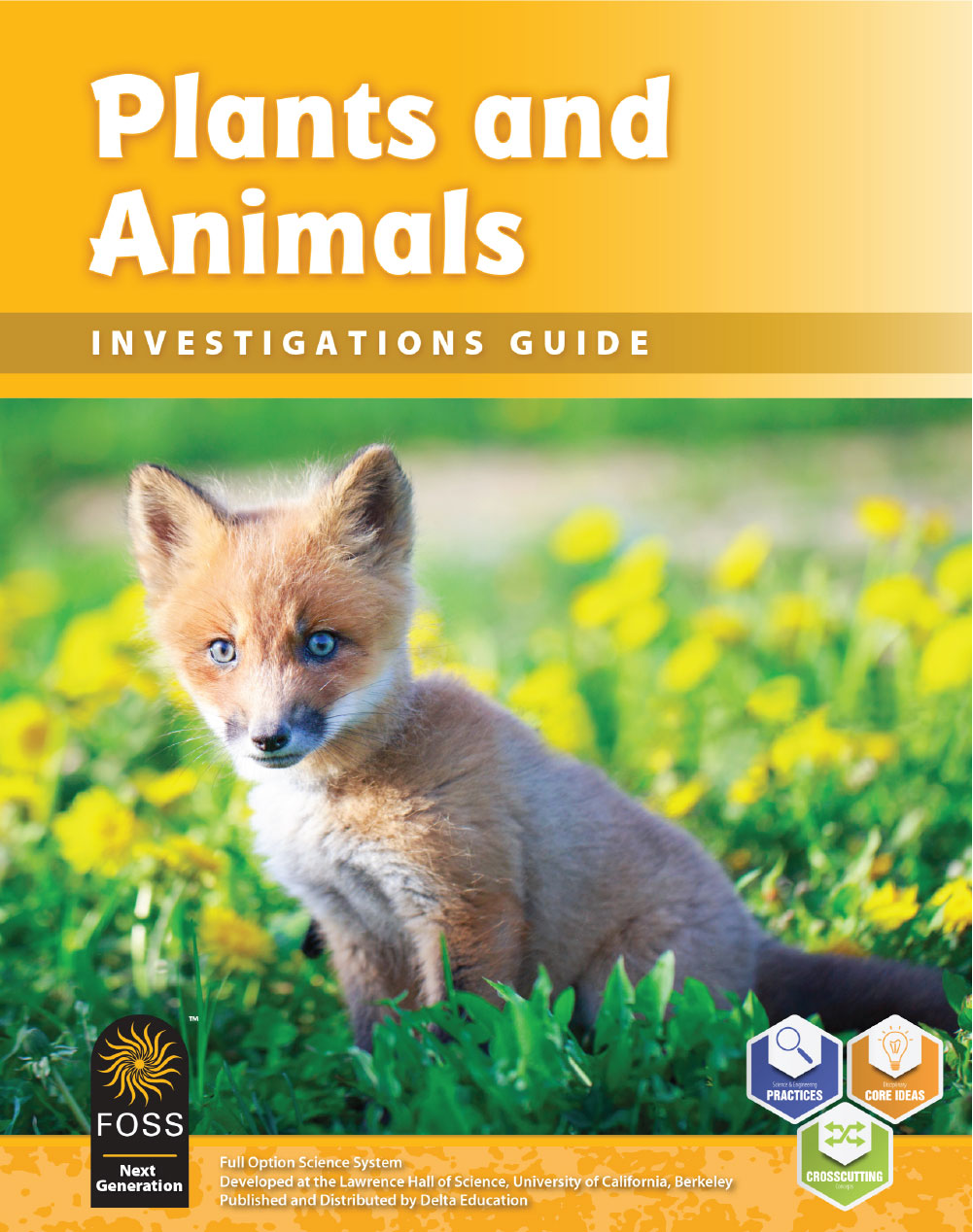FOSS Next Generation Plants and Animals
Grade 1

The Plants and Animals Module provides experiences that heighten students’ awareness of the way that plants and animals meet their basic needs. They observe plant structures and discover ways to propagate new plants from mature plants (from seeds, bulbs, roots, and stem cuttings). Students design terrariums and provide for the needs of both plants and animals living together in the classroom.
Investigation 1: Grass and Grain Seeds
Students make new plants from the stems of houseplants. They put sections of stems into water and look for evidence that a new plant is forming. Stem pieces that develop roots are planted to make new plants. Students plant pieces of potatoes (modified stems) and observe them grow. They learn about how plants make food.
Investigation 2: Stems
Students start this investigation with an exploration of evolutionary relationships. They examine a family tree and build a cladogram. Students build a model for how traits are inherited, starting with themselves and moving to a population of imaginary animals, larkeys. They learn about the basis of heredity, chromosomes and genes, and how genetic variation arises in populations. Students use Punnett squares to predict the probability of trait inheritance when the genetics of the parents are known.
Investigation 3: Terrariums
Students set up terrariums using seeds and plants from Investigations 1 and 2. They add local animals such as snails, isopods, and worms and provide for the needs of the plants and animals.
Investigation 4: Growth and Change
Students plant onion bulbs or garlic cloves in moist cotton and observe as they develop into new plants. They plant parts of roots—carrots and radishes—to discover which parts will develop into new plants.